Incredible treasures discovered in 2021
The terrific treasure troves found in 2021
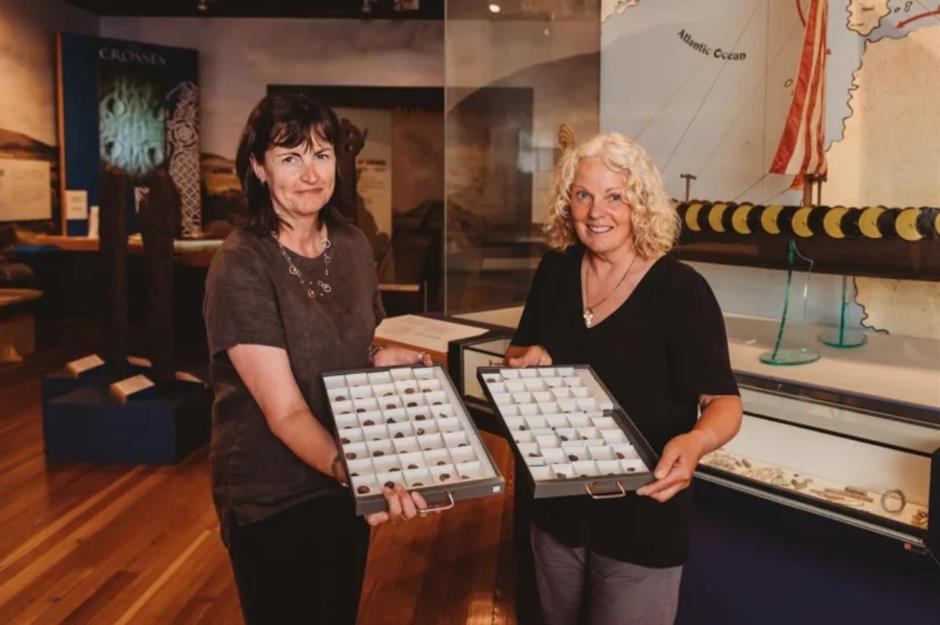
A mummy with a golden tongue
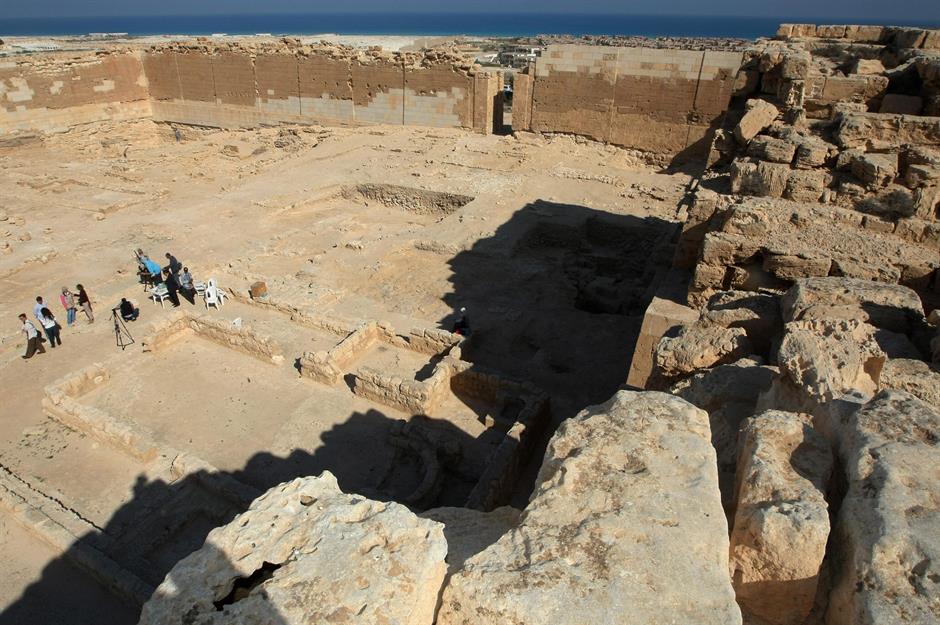
In January, archaeologists discovered 16 ancient mummies in the city of Alexandria, 111 miles (180 kilometres) north of Cairo. While these mummified bodies weren’t in the best condition, experts did note one mummy with a standout feature: it had a golden tongue.
Pieces of gold foil were traditionally placed in the mouths of the deceased to allow them to speak to Osiris, the Egyptian god of the afterlife. Remarkably, the precious metal was still visible around 2,000 years after the burial of the mummies in question, who the archaeologists estimated had lived and died sometime between 340 BC and 30 BC. Experts working on the site were also pleased to find a female funeral mask during the excavation.
Royal purple dye from Biblical times

In January, Israeli archaeologists found remnants of purple dye dating back to the reign of the biblical King David at a site in the Timna Valley, 137 miles (220km) south of Jerusalem. While it may sound insignificant, purple dye was actually more valuable than gold at the time of his reign (approximately 1010 BC to 970 BC), with the colour unsurprisingly linked to royalty and those of noble standing.
Carbon dating subsequently found that the fragment dates back to around 1000 BC. Purple is mentioned in reference to clothing worn by King David in both the Jewish and Christian Bibles, and the 2021 discovery is notable as it is the first time that dye from the period has been found on a piece of fabric. Previous discoveries have been found on mollusc shells and pottery.
Anglo-Saxon hoard in Cambridge

January also saw the demolition of student accommodation buildings at the University of Cambridge in England, leading to what has been described as "one of the most exciting finds in Anglo-Saxon archaeology since the 19th century".
The early medieval cemetery that was uncovered housed more than 60 graves. Within the graves, archaeologists found around 200 artefacts, including bronze brooches, short blades, bead necklaces, pottery, and swords. Most of the items were well preserved due to the alkaline soil in the area, and experts planned to analyse the objects to reveal information about those who were buried there, including their DNA and their diet, to trace their heritage.
2,500-year-old bull figurine

The ancient site of Olympia in Greece has been the hiding place of countless treasures over centuries gone by, and in February a bronze bull figurine was unearthed. A heavy downpour led to the discovery of the small statuette, with a sharp-eyed archaeologist spotting its horns sticking out of the mud. Due to the fact that it was covered in scorch marks, archaeologists believe the artefact may have been offered as a sacrifice to the Greek god Zeus.
Experts estimate that the tiny animal figure is around 2,500 years old, dating it to the Geometric period of Greek art, which falls between 1050 BC and 700 BC.
Dead Sea Scroll fragments
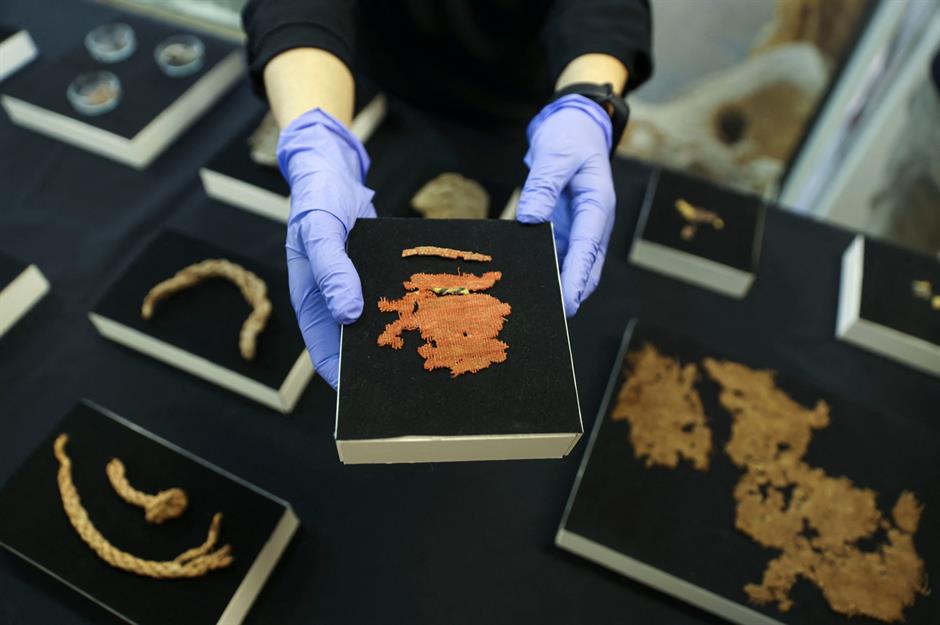
Since the first Dead Sea Scrolls were recovered from the area in 1947, teams of archaeologists have been scouring the Qumran Caves in Israel for decades in the hope of finding more. In March, the Israeli government announced that new fragments had been uncovered, revealing that they bore verses from the books of the prophets Zechariah and Nahum, and had been written almost entirely in Greek.
The recovered pieces of scroll are among the most important scriptural finds ever unearthed, as they contain the oldest versions of the Hebrew Bible and other Jewish texts, dating back to the time of Jesus Christ. Also discovered in the area was the 6,000-year-old skeleton of a child, rare coins, and a huge 10,500-year-old basket, which had capacity for around 25 gallons (114 litres) and is believed to be one of the oldest in the world.
Welsh Memento Mori death ring
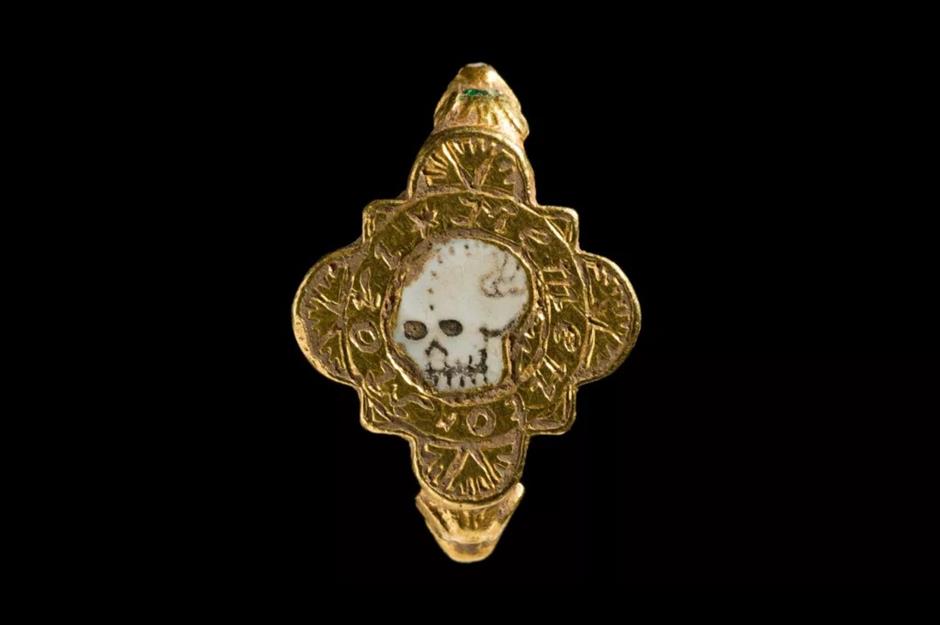
Metal detectorist David Balfour struck lucky when he uncovered a sinister-looking skull ring (pictured) in the Welsh community of Carreghofa. Surrounded by the inscription "Memento Mori" – Latin for "Remember that you die" – the white enamel skull is likely to symbolise death. The ominous ring, thought to date between 1550 and 1650, was officially declared a treasure on 29 March in a statement released by the National Museum Wales.
Back in 2019, hoards of silver and gold coins, rings, and personal objects worn by noble Welsh people and dating from the 9th to the 17th centuries were also uncovered in the same area by detectorists. These were also officially declared treasures in March 2021, and the artefacts are now part of the national collection.
Swedish Bronze Age hoard
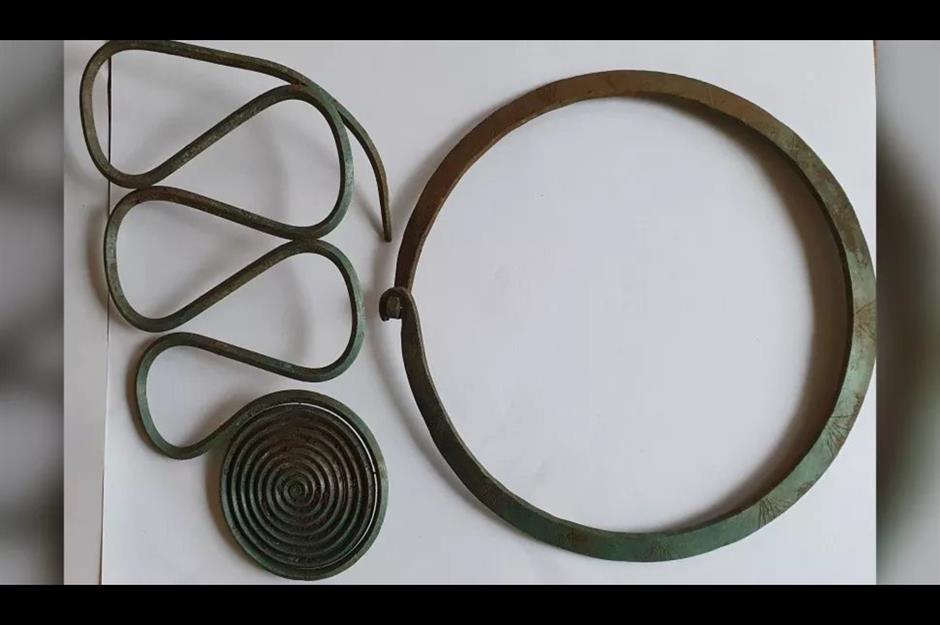
In early April, Tomas Karlsson was orienteering in the hilly, woodland region of Alingsås, southern Sweden, when he noticed what he thought was scrap metal jutting out from behind a pile of rocks. Remarkably, what he had actually stumbled upon was one of Sweden’s biggest-ever Bronze Age treasure hoards.
Archaeologists were called to the site and excavated approximately 50 items dating from the Late Bronze Age, which was around 2,700 to 2,500 years ago. Around 80% of the objects appeared to be linked with high-status women of the time. Included in the find were neck rings, bronze spirals, necklaces, arm rings, pins, ankle rings, and an axe head. Such hoards are rare in Sweden and are more likely to be found in northern Poland or Germany. As a result, the discovery points to the existence of a robust trade network, and archaeologists hope the find will lead to similar discoveries in the area.
Stone Age tools in the Scottish mountains

In early April, Stone Age tools were found in the Cairngorms mountain range in Scotland. The discovery included stone tools, as well as traces of firepits and shelters that would have been used after the end of the last Ice Age, around 10,000 years ago. The find is all the more remarkable as evidence of people living in the area around that time is hard to find.
Additionally, artefacts from the Mesolithic period are more commonly found in the lowland areas. These objects join just a handful of discoveries that suggest communities also inhabited the more mountainous landscapes.
Isle of Man Viking hoard
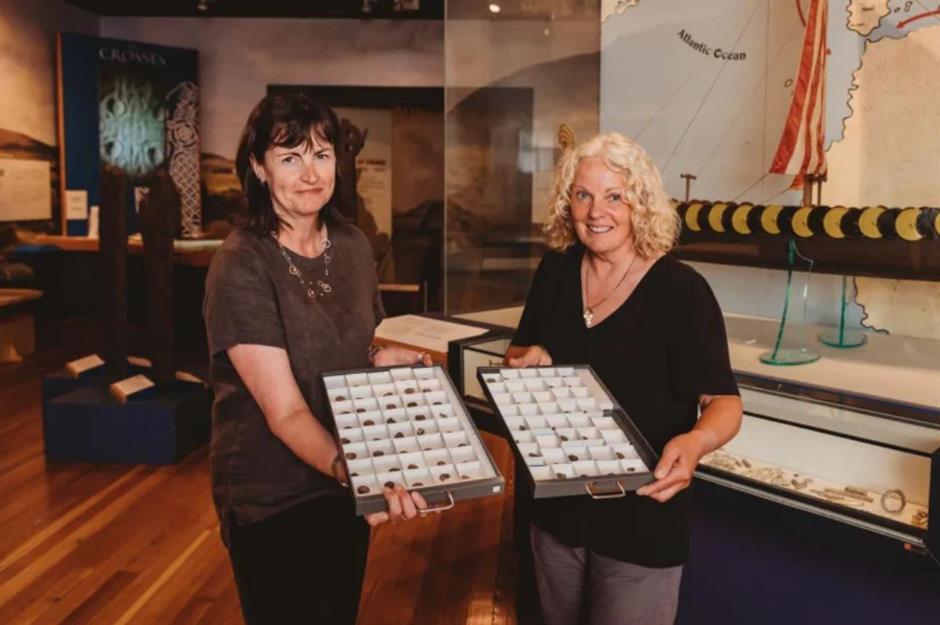
In April, a Viking treasure hoard thought to be worth thousands was uncovered by a metal detectorist on the Isle of Man, which is located between Ireland and England. The cache contained 87 Viking silver coins, as well as other artefacts that dated from around 990-1030 AD. The incredible haul was officially declared treasure in July.
The discovery was made by natural-born treasure hunter Kath Giles (pictured on the right), and marked her fourth significant find since taking up metal detecting just three years ago. Experts believe the loot is likely someone’s personal wealth. Most of the coins had been minted in Dublin, Ireland; Germany; and on the Isle of Man itself.
Buried stolen treasure
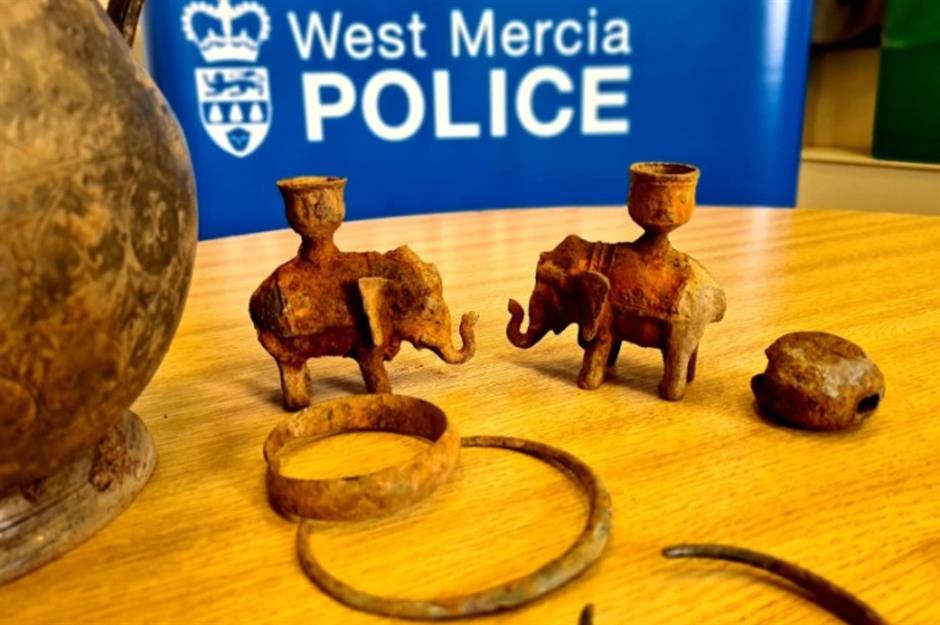
A metal detectorist recovered stolen treasure worth thousands while on his first-ever hunt. Charles Cartwright was searching in a field in Worcestershire, England in May when his metal detector "went crazy". He subsequently unearthed almost 300 items, including Roman and Viking jewellery, ancient Egyptian antiques, and medieval and Bronze Age items (pictured).
Cartwright's suspicions were immediately aroused as the artefacts were found wrapped inside an Aldi shopping bag. He contacted the local authorities, who discovered the remarkable truth behind the treasure: it was stolen during a house robbery in 2017. The rightful owner, an anonymous collector who believed he’d never see his treasure again, has since been reunited with it. On the other hand, the identity of whoever stole and buried the loot remains a mystery.
17th-century paintings found in a skip
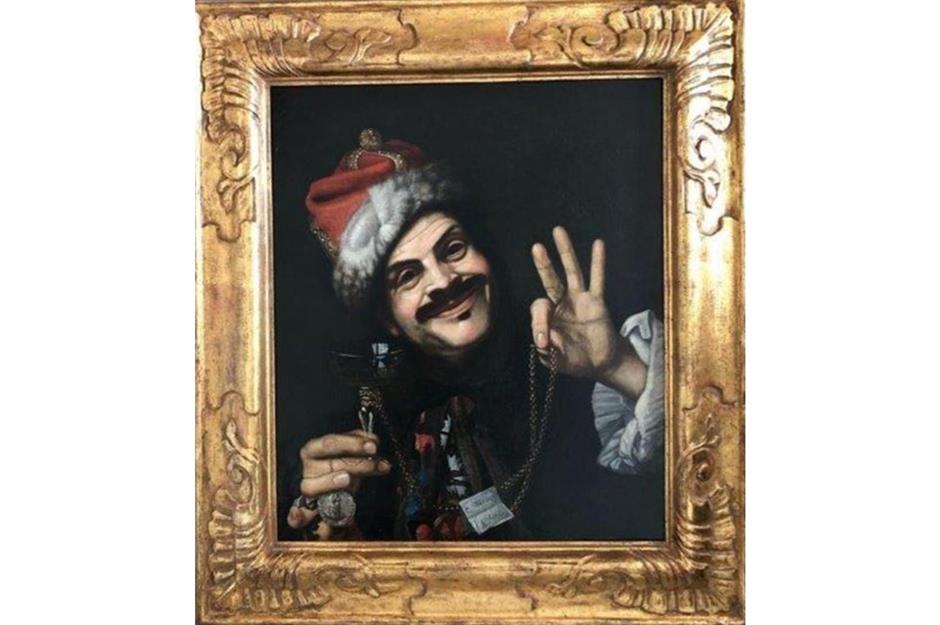
A driver found more than he bargained for in May when he stopped off at a German motorway service station and discovered two framed 17th-century oil paintings dumped in a skip. Upon finding the paintings on the A7 south of Würzburg, Bavaria, the man handed them to authorities in Cologne. An investigation revealed the pieces were original works by Italian painter Pietro Bellotti (1625-1700; his painting is pictured) and Dutch artist Samuel van Hoogstraten (1627-1678).
The two paintings are believed to be worth a small fortune. In 2018, a painting titled La Crucifixion by Hoogstraten sold for an incredible £285,285 ($378k) at auction. The following year, another painting by the renowned artist was sold for a cool £50,062 ($66.2k). How these valuable works of art ended up in a skip remains a mystery.
500-year-old Viking treasures

Glaciers can be a rich source of history, and the partial melting of a giant ice mass in Norway revealed a perfectly-preserved Viking treasure trove back in June. The wooden box, thought to be 500 years old, contains the remains of beeswax candles. It might not sound that exciting when compared to other items on this list, but it hints at how the Vikings would have lit their annual journey through a treacherous mountain pass.
An array of other Viking treasures have been unearthed from the Lendbreen ice patch over the years; a hoard of artefacts, including spears and armour, was found there in 2011.
€85,000 in cash found in the trash
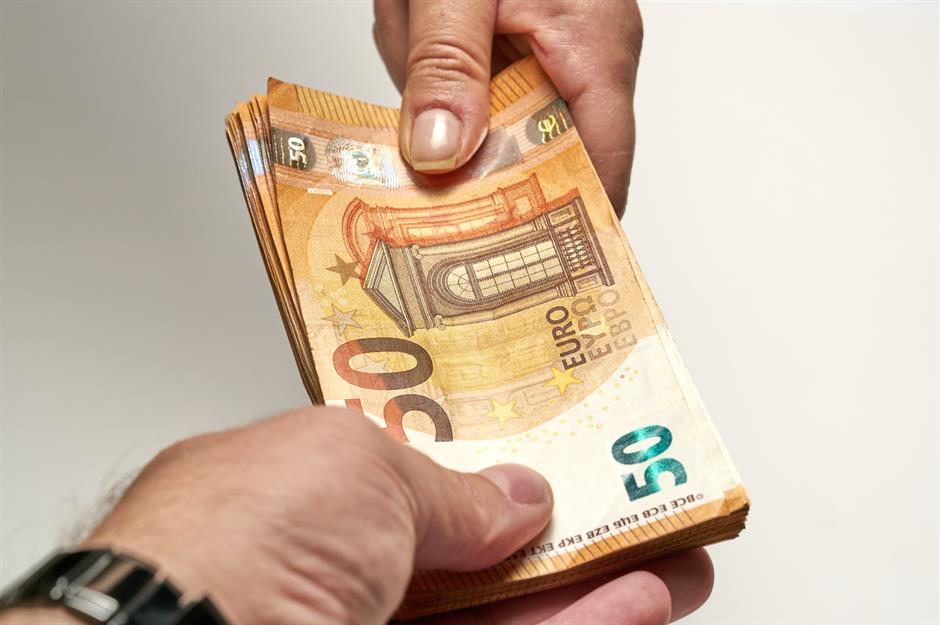
In June, a man discovered an elephant ornament stuffed with €85,000 ($96k/£72.5k) in cash in a garbage collection in Bordeaux, France. While many would be tempted to keep the money, the man opted to hand it over to the local police, who used forensic identification to try to trace its origin. They first thought the cash could be linked to drug trafficking, but the truth was decidedly more mundane...
Several days later, a man contacted the police and claimed that he had thrown the elephant away without checking its contents. The man had been cleaning his parents' apartment following the death of his mother and the resulting relocation of his father to a nursing home. The man said the money was probably their life savings. While it's unclear if his story was credible, if proven true we can imagine he was delighted by his unexpected windfall.
Atocha gold coin discovered in a shipwreck
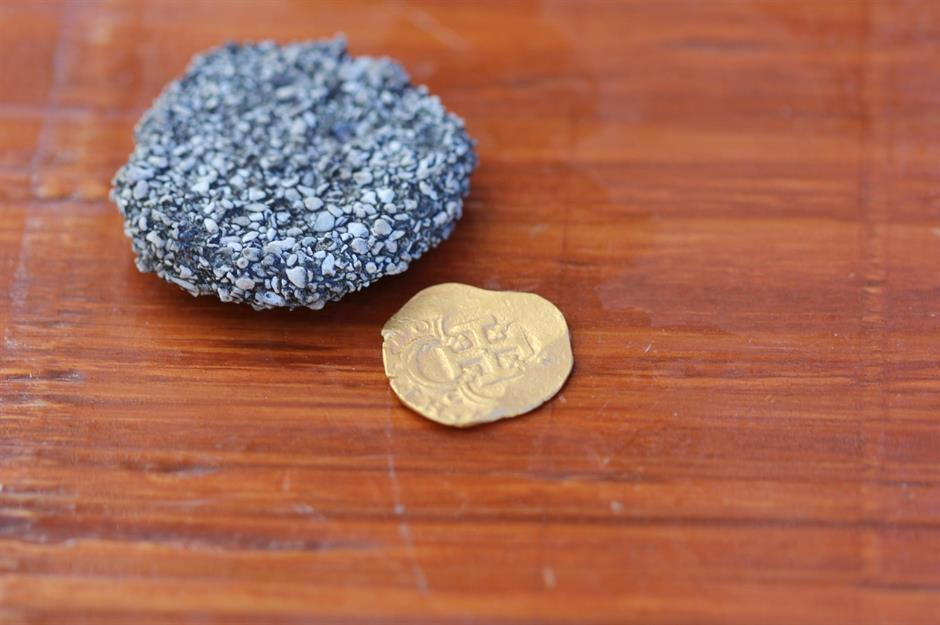
Professional treasure hunter Zach Moore hit the jackpot on 16 July when he found an ultra-rare Atocha gold coin valued at $98,000 (£74k) while exploring a shipwreck in the Florida Keys. Moore, a diver and engineer, discovered the valuable loot near the wreck of Spanish galleon Nuestra de Atocha. It is the 121st Atocha gold coin to be recovered from the site, and the first for 20 years.
When the ship sank in 1622, it was loaded with gold, silver, gems, and other valuables that were bound from the New World to Spain. The cargo’s total value was estimated to be $400 million (£302m). Moore is a member of the crew of Mel Fisher’s Treasures salvage vessel J.B. Magruder, which has been working on the site of the shipwreck.
Roman gold coin hoard
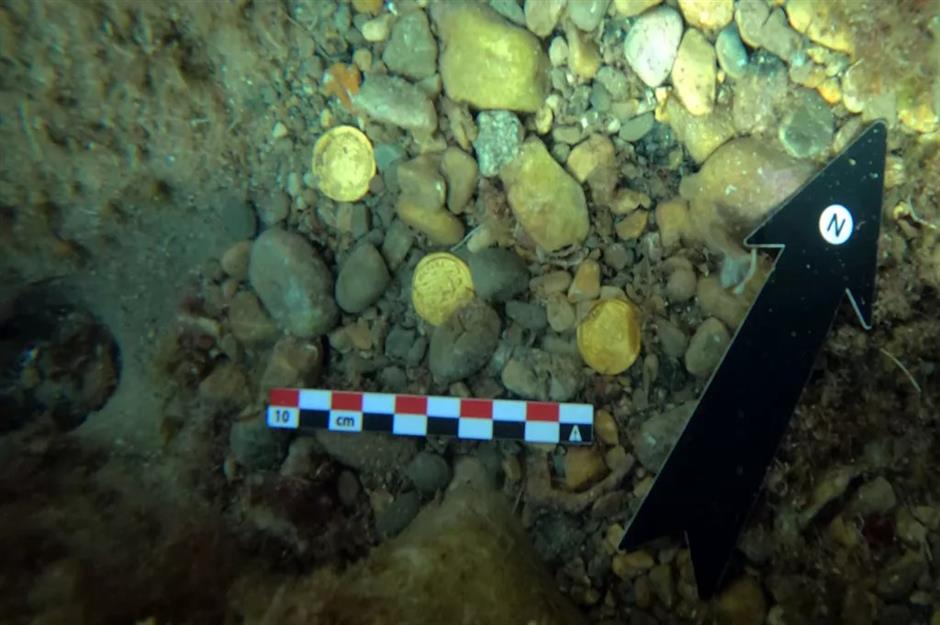
On 23 August, two amateur divers stumbled upon a massive hoard of 1,500-year-old gold coins while freediving in Spain. With the kindly intention of picking up litter to improve the environment, brothers-in-law Luis Lens Pardo and César Gimeno Alcalá rented snorkelling equipment while on vacation in Xàbia, a touristy coastal town in Spain. Rather than recovering trash, however, the pair actually discovered treasure.
Initially, Lens Pardo spotted the glimmer of just one coin, which he found in a small bottleneck-like hole. The men returned with Swiss Army Knives and unearthed eight more coins. With the help of archaeologists, they subsequently discovered that the hole in fact contained a huge hoard of 53 Roman gold coins dating between 364 AD and 408 AD. The incredible find is one of the biggest on record that dates back to the Roman Empire.
Denmark Viking gold hoard
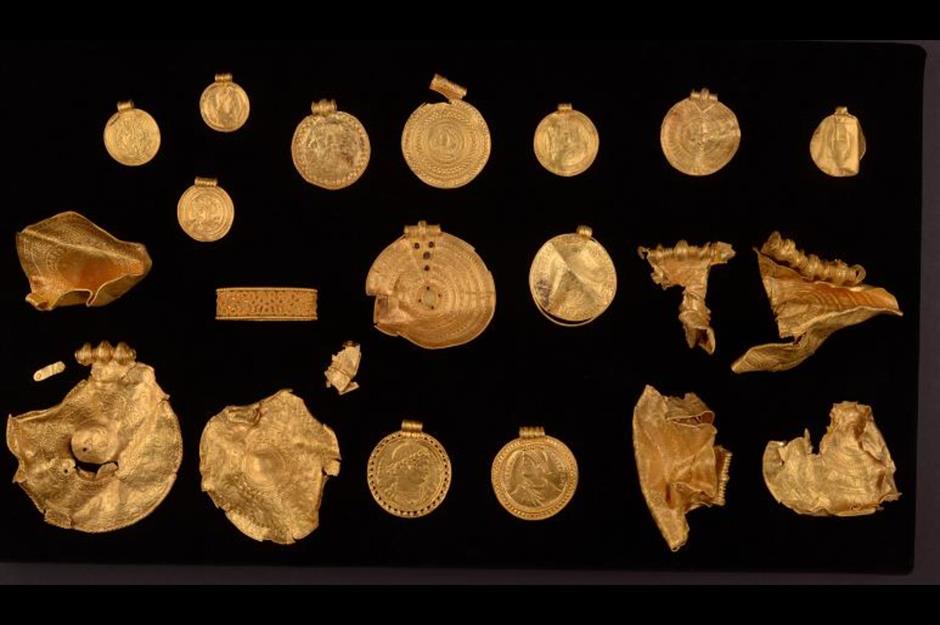
In September, one of the greatest treasure troves ever found in Denmark was unearthed in the country's southwest. Amateur archaeologist Ole Ginnerup Schytz had just recently bought a metal detector and was exploring the fields near Jelling – a town that historians believe was the home of Viking-age kings between the 8th and 10th centuries – when he made the extraordinary discovery.
Weighing just under a kilogram (2.2lb), the hoard contained a range of gold objects from the sixth century, including a saucer-sized medallion and an item representing Constantine, the Roman emperor. Many of the artefacts boast runic motifs and inscriptions, thought to refer to the rulers of the time, as well as Norse mythology. The priceless artefacts, which are believed to have belonged to an Iron Age chieftain, will be displayed at Denmark's Vejle Museum from February 2022.
Rare shilling discovered in a candy tin
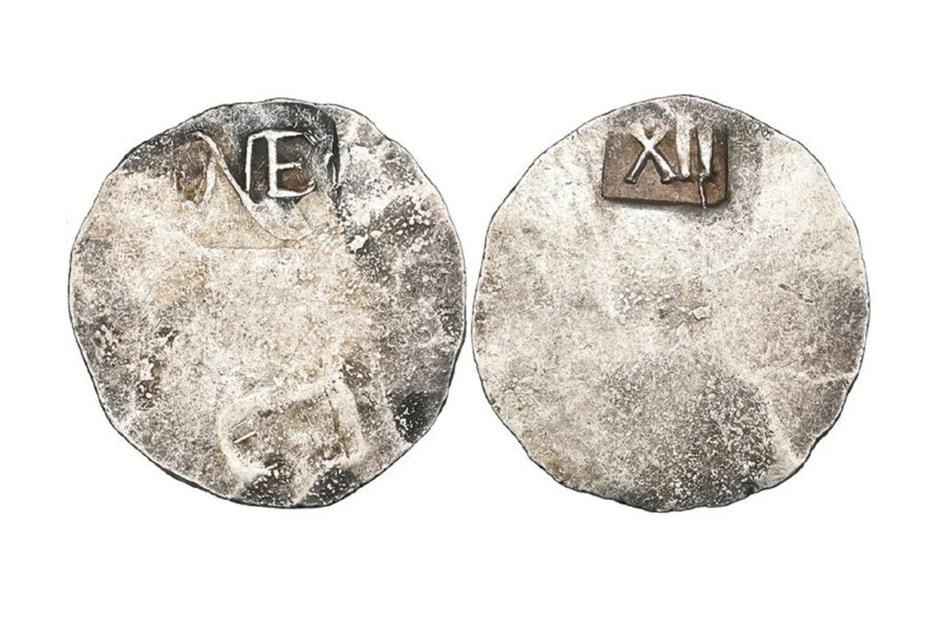
The finest known example of a one shilling silver coin was sold at auction in November for a staggering $351,912 (£266k). The ultra-rare, mint-condition coin is one of just 40 or so in existence, hence the premium price tag. One of the first coins to be minted in Boston, the coin dates back to 1652 and was used as currency by the early settlers of the Massachusetts Bay Colony.
The coin was discovered in Northumberland, England, and was found inside a candy tin that contained hundreds of other old coins. Wentworth Beaumont, whose father found the valuable artefact, is a descendant of William Wentworth (1616-1697), the early New England settler. One of Beaumont's ancestors presumably brought the coin from America to the UK.
Middle Bronze Age hoard
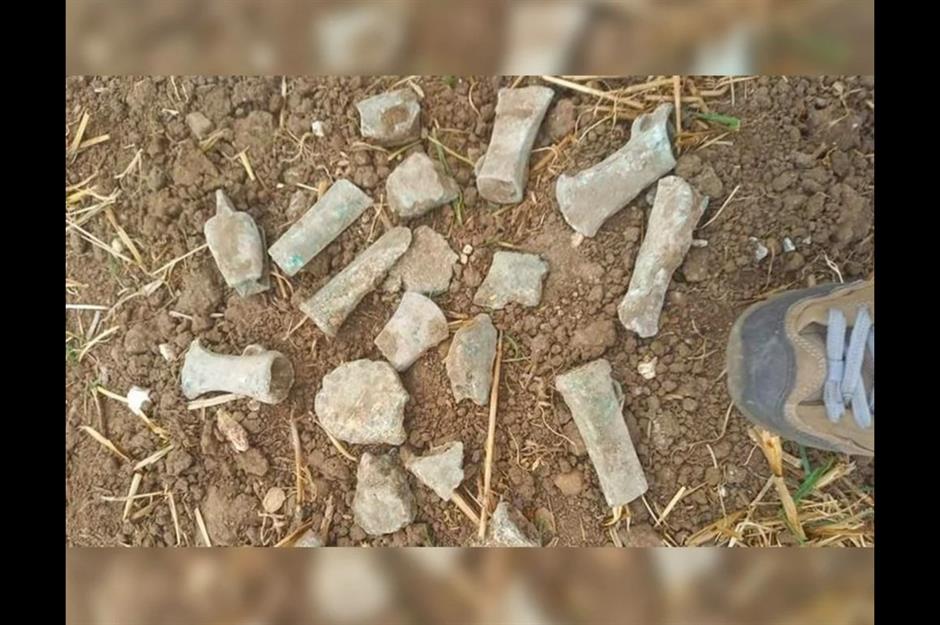
In November it was revealed that a promising young archaeologist had unearthed a Bronze Age treasure hoard – and on only her third expedition. Milly Hardwick, aged just 13 years at the time, was out metal detecting with her father in a field near Hertfordshire, England when they discovered an axe head dating back to around 1300 BC. The father-daughter duo then uncovered a further 20 objects before archaeologists arrived to investigate the following day.
The archaeologists excavated a hoard of 65 ancient artefacts dating from the Middle Bronze Age. The historic objects will be transferred to the British Museum in London.
Stolen money stashed in church wall

A plumber carrying out repairs at controversial pastor Joel Osteen’s Lakewood Church (pictured) got the shock of his life when he discovered $600,000 (£453k) worth of cash and cheques stashed in the walls. Recounting his incredible story, the plumber, identified as Justin, said he was removing the toilet when, to his amazement, about "500 envelopes fell out of the wall".
Police were called to investigate the incident on 10 November, and concluded that the money was connected to a theft that had taken place at the Houston megachurch in 2014. The plumber received a $20,000 (£15.1k) Crime Stoppers reward for his discovery, making it one seriously bankable day on the job.
Roman silver coin hoard

News broke in November that a team of archaeologists had uncovered a riverside trove of over 5,500 silver coins in Augsburg, Germany, which they believe were buried around 1,800 years ago. The Roman era coins are denarii, which was the standard silver currency during the 1st to early 3rd centuries. The youngest coin in the hoard was minted at the beginning of the third century.
The coins were discovered scattered in a recently dug pit, although this wasn't their original location. Their original burial place was most likely washed away by a flood of the Wetach River centuries ago, scattering the coins amid the river gravel. Archaeologists believe the trove was first buried outside of the Roman city of Augusta Vindelicum in the early third century, although why the cache was concealed in the first place will most likely forever remain a mystery.
Now discover the most valuable metal detector finds.
Comments
Be the first to comment
Do you want to comment on this article? You need to be signed in for this feature
Most Popular
Features How Michael Jackson's children boost their bank balances